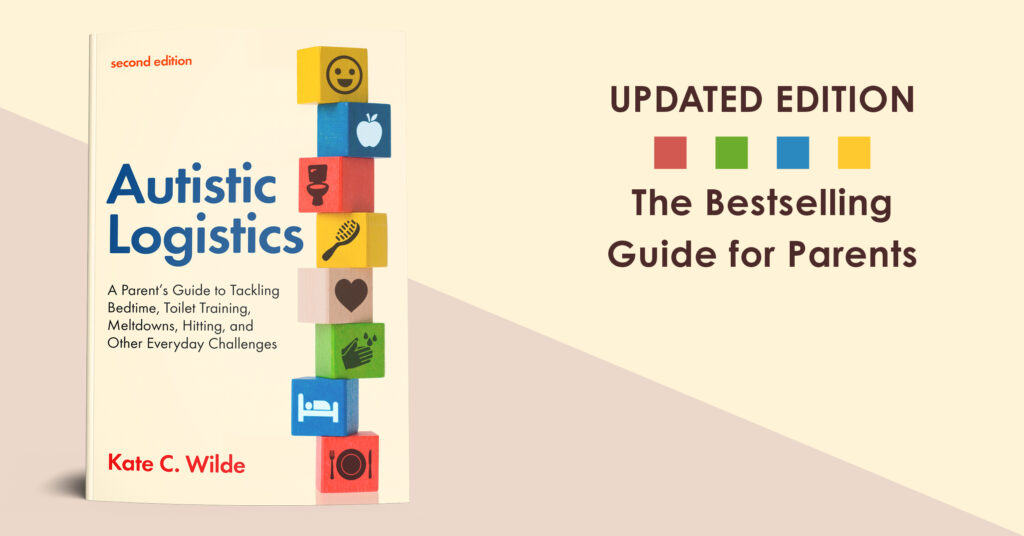Not all crying, shouting, hitting, or screaming is a tantrum. There are significant times when (for our children or adults on the spectrum) what looks like tantrums are actually what my colleague Raun K. Kaufman and I call Neuro-Crashes.

A Neuro-Crash happens when the imposed situation overwhelms our child or adult so that their normal coping mechanisms shut down. This results in your child or adult hitting, screaming, crying or having another extreme behavior. It is a cry for help and requires our compassion and understanding.
The great news is twofold: Neuro-Crashes are not inevitable and there is a lot we can do to reduce them. I talk in detail about how to reduce Neuro-Crashes so that they are a rare and not a common occurrence in the second edition of my book, Autistic Logistics. Also, along with Raun K. Kaufman, I run courses to help parents and professional do this. You can find out more about those at www.autismcrisisturnaround.com.
Here are two ways you can reduce Neuro-Crashes right now.
Reduce Sensory Overload
Look for ways you can reduce sensory stimuli in your home. Stand quietly in each of your rooms and listen for any background machine noises, then do your best to eliminate them. A mom of a 33-year-old on the spectrum had years of every mealtime with her daughter screaming and refusing to sit at the table. After taking one of our courses on Neuro-Crashes, she went into her kitchen and listened for any background sounds. She heard the quiet hum of the fridge. Thinking that her daughter might be experiencing this differently than she did, she decided to give her meal in her bedroom instead, away from that noise. When she did that her daughter ate her meal quietly without any screaming, wow! Of course, she wished she had known about this a lot sooner!
I share this particular story to illustrate that it is not just the big noises like thunderstorms or loud trucks passing that affect our children; there are often hidden noises not even on our radar that can tremendously affect our them and cause Neuro-Crashes.
Picture a sensory wall that your child or adult can crash into. Crashing into it results in a Neuro-Crash. It’s not about just one sound; it’s about all the sounds. For example, your child or adult may be at a supermarket with you, dealing with the sounds of all the people, the announcements, the wheels on the floor, the hums of the fridges and freezers and air conditioners. Then you go home, and you put on the blender and he is still coping with the grocery store, and then his sibling cries. That last moment is when he has a Neuro-Crash. So, understandably, you think it is because his sibling cried, but really the crying just happened to be the sound that tipped him into crashing into his sensory wall. Reducing sensory overload will keep your child or adult away from their sensory wall, and therefore away from a Neuro-Crash.
Eliminate Control Battles
Autistic children and adults have a heightened need for control and predictability. Look for places in their everyday where you can give them this control. Start with reducing the amount of daily battles you have with your child or adult. Look for places where you can say yes instead of no. For example, let them wear their favorite shirt each day, get up from table at mealtime, or take their favorite items with them wherever they go.
If there are things that they get into that are challenging for you in the house, look for ways to eliminate them so that you do not have to say no. For example, if they keep ripping up your books, box all your books up and put them in the attic. That way your child or adult does not have access to them, and you do not have to say no. Saying yes more of the time and giving them control when you can will help your child not have Neuro-Crashes. There are many more examples on how to do this in the second edition of my book, Autistic Logistics.
Fewer Neuro-Crashes will reduce their anxiety and your anxiety. There is more to learn about eliminating Neuro-Crashes, but putting the above two steps into practice will be a great start. I wish you well on your journey with your amazing child or adult!
Kate C. Wilde
Author of Autistic Logistics: A Parent’s Guide to Tackling Bedtime, Toilet Training, Meltdowns, Hitting and Other Everyday Challenges, The Autism Language Launcher: A parent’s Guide to Helping Your Child Turn Sounds and Words into Simple Conversations, and the upcoming book, Autism Abracadabra: 7 Magic Ingredients to develop your Child’s Interactive Attention Span, and the co-creator of the Autism Crisis Turnaround Protocol.